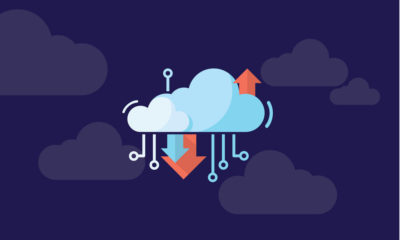World
Workers Compensation Claims

Workers compensation or workers comp is a government-mandated program that pays benefits to employees who sustain an injury or become sick on the job or due to their work. It functions as a disability insurance mechanism for workers. Thus, offering monetary benefits, healthcare benefits, or both to workers that sustain injuries or become ill as a direct result of their work.
“Going through any claim can be a strenuous process. Your claim may be accepted or rejected even when you are not the cause of any damage incurred,” says personal injury attorney Sheryl Lam.
Most firms need Workers comp insurance to cover employees that sustain injuries on the job. Though employees are not required to establish responsibility to get benefits, the worker compensation process entails multiple steps, and insurers may ultimately dismiss their claims.
Benefits from Workers Compensation
Almost every state mandates that employers must provide workers comp coverage to their employees. Below are the different types of workers comp benefits:
#1. Medical Benefits
After a claim approval, workers comp insurance reimburses medical expenses for employees due to the injury or illness. The medical expenses include doctor appointments, drugs, chronic pain management, physical therapy, surgery, hospital treatment, and equipment like crutches and wheelchairs.
The reimbursement of medical expenses continues until the injured worker reaches Maximum Medical Improvement (MMI), which is the point of no further treatment that can help them get better.
When this is the case, there may be a limitation of paid medical costs to only those treatments that aid in maintaining MMI, and benefits may be subject to time constraints. At this time, there may be an assignment of the disability of an employee, the establishment of continuing work restrictions, and the settlement procedure.
#2. Disability Benefits
If an employee cannot work due to work-related injury, disability payments might help to replace some of their lost wages. The employee earning capacity, disability type, and state rules determine the amount of pay replacement. The calculation entails using the weekly pay of employees before the injury.
Employees who require time off to recover or receive medical care can use these disability benefits to supplement their income until they return to work. This workers comp benefit might last a lifetime if an employee experiences a permanent disability but only until their temporary disability benefits have run out.
Furthermore, the employee level of disability determines whether disability benefits are temporary or permanent. Temporary and permanent disability compensation is available in two forms: total and partial:
- Temporary total disability: the employee cannot work for some time, but there is an expectation that they will return to their job after recovery.
- Temporary partial disability: an employee can perform some of their duties, but only in a reduced capability or part-time.
- Permanent total disability: the employee sustains a lifelong injury and will never return to their previous position or do any job.
- Permanent partial disability: the injury can be life-lasting, and the individual can return to work, but only at a reduced capacity, preventing them from earning as much money as they did before the injury.
#3. Rehabilitation Benefits
Injured workers who are permanently incapacitated and unable to return to their previous job can benefit from vocational rehabilitation. Rehabilitation benefits often cover career training, resume assistance, job growth and placement, tuition, books, skills assessment, and testing. Rehabilitation benefits cover retraining expenses so that an employee can get the new skills or qualifications needed to get back to work in a job that pays as much as their former one did.
Limitations to Worker Compensation Claims
One of the most significant drawbacks of workers comp claims is that they provide limited benefits to injured workers. These benefits are limited in that they do not account for non-economic damages. This is one of the most significant distinctions between a workers comp claim and a personal injury claim.
The victim must prove that the defendant is to blame for their injuries in a personal injury case. If successful, they can be reimbursed for both economic and non-economic damages. A personal injury case compensation covers economic damages similar to those covered by workers comp claims, such as past and future medical expenditures, missed wages, loss of earning potential, and property damage.
Non-economic damages, which compensate accident victims for the total decline in quality of life they experienced due to the accident, including pain and suffering, are not covered by a successful workers comp claim. Workers comp compensates for economic losses, ignoring the psychological and emotional impact of an accident on the life of workers.
Challenges in Pursuing a Workers Compensation Claim
While an injured employee does not have to establish that anybody else is to blame for their injury, they sometimes find it hard to get the benefits. The insurance carrier of a company manages the compensations of employees. Anyone who has worked with an insurance company following an accident knows how frustrating it can be.
An insurance company will frequently challenge a workers comp claim in the hopes of lowering the amount of money it must payout. Insurance firms will sometimes deny that the injuries are work-related.
An insurance company may also assert that the injuries are not as severe as they claim. For instance, an insurance company may deny permanent disability compensation by arguing that injured workers can still fulfill their job obligations despite their injuries.
What To do When the Insurer Denies the Claim
The best step to winning a claim is consulting an experienced lawyer. Your lawyer can negotiate compensation with the insurance company on your behalf. If an insurer disapproves of your claim, your lawyer can help you file a lawsuit against the insurance company and can defend you as well.
The lawyer will give you feedback on every step of the claims regularly. Filing paperwork, obtaining proof, and negotiating can all take a lot of time and effort. The process can be taxing, particularly if you are healing from significant injuries. Working with a lawyer can alleviate some of the stress while also potentially improving the outcome of your case.
Conclusion
Dealing with legal problems, especially after suffering a work-related injury, can be incredibly exhausting for non-lawyers. The filing process for benefits is not usually straightforward sometimes and occasionally necessitates consulting an experienced attorney. Thus, before filing a workers comp claim, it is advisable to consult an experienced attorney.
World
TRG Chairman Khaishgi and CEO Aslam implicated in $150 million fraud

In a scathing 52-page decision, the Sindh High Court has found that TRG Pakistan’s management was acting fraudulently and that Bermuda-based Greentree Holdings historic and prospective purchase of TRG shares were illegal, fraudulent and oppressive.
The Sindh High Court has further directed TRGP to immediately hold board elections that have been overdue and illegally withheld by the existing board since January 14, 2025.
In the landmark ruling, the Sindh High Court has blocked the attempted takeover of TRG Pakistan Limited by Greentree Holdings, declaring that the shares acquired by Greentree, nearly 30% of TRG’s stock, were unlawfully financed using TRG’s funds in violation of Section 86(2) of the Companies Act 2017.
“Having concluded that the affairs of TRGP are being conducted in an unlawful and fraudulent manner and in a manner oppressive to members such as the Petitioner (Zia Chishti), the case falls for corrective orders under sub-section (2) of section 286 of the Companies Act,” Justice Adnan Iqbal Chaudhry concluded.
The case was brought by TRGP former CEO and founder Pakistani-American technology entrepreneur Zia Chishti against TRG Pakistan, its associate TRG International and TRG International’s wholly-owned shell company Greentree Limited. In addition, the case named AKD Securities for managing Greentree’s illegal tender offer as well as various regulators requiring that they act to perform their regulatory duties.
The case centred around the dispute that shell company Greentree Limited was fraudulently using TRG Pakistan’s own funds to purchase TRG Pakistan’s shares in order to give control to Zia Chishti’s former partners Mohammed Khaishgi, Hasnain Aslam and Pinebridge Investments.
According to the case facts, the Chairman of TRG Pakistan Mohammed Khaishgi and the CEO of TRG Pakistan Hasnain Aslam masterminded the $150 million fraud. They did so together with Hong Kong based fund manager Pinebridge who has two nominees on TRG Pakistan’s board, Mr. John Leone and Mr. Patrick McGinnis.
According to the court papers, Khaishgi, Aslam, Leone, and McGinnis set up a shell company called Greentree which they secretly controlled and from which they started buying up shares of TRG Pakistan. The fraud was that Greentree was using TRG Pakistan’s funds itself. The idea was to give Khaishgi, Aslam, Leone, and McGinnis control over TRG Pakistan even though they owned less than 1% of the company, lawyers of the petitioner told the court.
This was all part of a broader battle for control over TRG Pakistan that is raging between Khaishgi, Aslam, Leone, and McGinnis on one side and TRG Pakistan founder Zia Chishti on the other side. Zia Chishti has been trying to retake control of TRG Pakistan after he was forced to resign in 2021 based on sexual misconduct allegations made by a former employee of his. This year those allegations were shown to be without basis in litigation that Chishti launched in the United Kingdom against The Telegraph newspaper which had printed the allegations. The Telegraph was forced to apologize for 13 separate articles it published about Chishti and paid him damages and legal costs.
After Chishti resigned in 2021, Khaishgi, Aslam, Leone, and McGinnis moved to take total control over TRG Pakistan and its various subsidiaries including TRG International and to block out Chishti. The Sindh High Court’s ruling today has reversed that effort, ruling the scheme fraudulent, illegal, and oppressive.
It now appears that Zia Chishti will take control of TRG Pakistan in short order when elections are called. He and his family are now the largest shareholders with over 30% interest. He is closely followed by companies related to Jahangir Siddiqui & Company which have over a 20% interest. The result appears to be a complete vindication for Zia Chishti and damning for his rivals Aslam, Khaishgi, Leone, and McGinnis who have been ruled to have been conducting a fraud.
TRG Pakistan’s share price declined by over 8% on the news on heavy volume. Market experts say that this was because the tender offer at Rs 75 was gone and that now shares would trade closer to their natural value. Presently the shares are trading at Rs 59 per share.
According to the court ruling, since 2021, shell company Greentree had purchased approximately 30% of TRG shares using $80 million of TRG’s own money, which means that that the directors of TRG Pakistan allowed company assets to be funneled through offshore affiliates TRG International and Greentree for acquiring TRG’s shares – a move deemed both fraudulent and oppressive to minority shareholders. The Sindh High Court also found illegal Greentree’s further attempt to purchase another 35% of TRG shares using another $70 million of TRG’s money in a tender offer.
The ruling is a major victory for the tech entrepreneur Zia Chishti against his former partners and the legal ruling paves the way for him to take control of TRG in a few weeks.
-

 Tech4 years ago
Tech4 years agoEffuel Reviews (2021) – Effuel ECO OBD2 Saves Fuel, and Reduce Gas Cost? Effuel Customer Reviews
-

 Tech6 years ago
Tech6 years agoBosch Power Tools India Launches ‘Cordless Matlab Bosch’ Campaign to Demonstrate the Power of Cordless
-

 Lifestyle6 years ago
Lifestyle6 years agoCatholic Cases App brings Church’s Moral Teachings to Androids and iPhones
-

 Lifestyle4 years ago
Lifestyle4 years agoEast Side Hype x Billionaire Boys Club. Hottest New Streetwear Releases in Utah.
-

 Tech7 years ago
Tech7 years agoCloud Buyers & Investors to Profit in the Future
-

 Lifestyle5 years ago
Lifestyle5 years agoThe Midas of Cosmetic Dermatology: Dr. Simon Ourian
-

 Health6 years ago
Health6 years agoCBDistillery Review: Is it a scam?
-

 Entertainment6 years ago
Entertainment6 years agoAvengers Endgame now Available on 123Movies for Download & Streaming for Free
